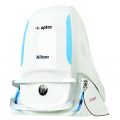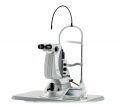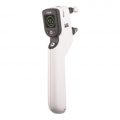-
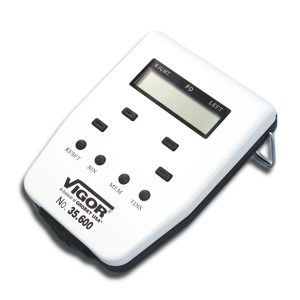 Look more modern while improving your accuracy and decreasing remakes with your PAL's. This digital pupilometer is easy to use. Requires 4 AA batteries (not included).
Look more modern while improving your accuracy and decreasing remakes with your PAL's. This digital pupilometer is easy to use. Requires 4 AA batteries (not included). -
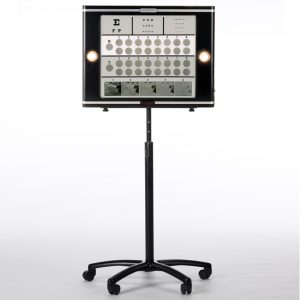 VectorVision Contrast Sensitivity Testing Unit (Includes Testing Box and Test Chart) The VV1000 is used clinically by eye doctors in over 45 countries to evaluate cataracts, glaucoma, diabetic eye disease, contact lens performance, refractive surgery, etc. In addition, the instrument has been selected for use in numerous multi-center trials for the evaluation of contrast sensitivity, ETDRS acuity, low contrast acuity and glare sensitivity. These studies include those for PRK refractive surgery, contact lens evaluation, LASIK refractive surgery, athlete visual performance, visual impact of pharmaceutical treatments, etc. The patented CSV-1000 standardization insures that testing light levels do not vary due to changes in line voltage or due to bulb aging. No other vision testing instrument offers this standardization package. The VV1000 is the only self-standardized vision testing instrument. In each row of the device, photocell circuitry continually monitors and calibrates the instrument light level. This unique system senses both the external light striking the face of the instrument and the internal light which emanates from the miniature fluorescent bulbs. By measuring both light sources, the patented circuitry (U.S. Patent Number 5,078,486) determines the total light reflected from the instrument face and provides for a constant test luminance level of 85 cd/m2. The CSV-1000 is operated by wireless remote control so that each row of the instrument can be individually lighted for easier viewing by the patient. The VV1000 can be used with a variety of tests. The VV-1000 can easily rest on a table, hang on the wall or be used with rolling floor stand. The instrument can be easily transported from office to office or to out-of-office screening locations.
VectorVision Contrast Sensitivity Testing Unit (Includes Testing Box and Test Chart) The VV1000 is used clinically by eye doctors in over 45 countries to evaluate cataracts, glaucoma, diabetic eye disease, contact lens performance, refractive surgery, etc. In addition, the instrument has been selected for use in numerous multi-center trials for the evaluation of contrast sensitivity, ETDRS acuity, low contrast acuity and glare sensitivity. These studies include those for PRK refractive surgery, contact lens evaluation, LASIK refractive surgery, athlete visual performance, visual impact of pharmaceutical treatments, etc. The patented CSV-1000 standardization insures that testing light levels do not vary due to changes in line voltage or due to bulb aging. No other vision testing instrument offers this standardization package. The VV1000 is the only self-standardized vision testing instrument. In each row of the device, photocell circuitry continually monitors and calibrates the instrument light level. This unique system senses both the external light striking the face of the instrument and the internal light which emanates from the miniature fluorescent bulbs. By measuring both light sources, the patented circuitry (U.S. Patent Number 5,078,486) determines the total light reflected from the instrument face and provides for a constant test luminance level of 85 cd/m2. The CSV-1000 is operated by wireless remote control so that each row of the instrument can be individually lighted for easier viewing by the patient. The VV1000 can be used with a variety of tests. The VV-1000 can easily rest on a table, hang on the wall or be used with rolling floor stand. The instrument can be easily transported from office to office or to out-of-office screening locations. -
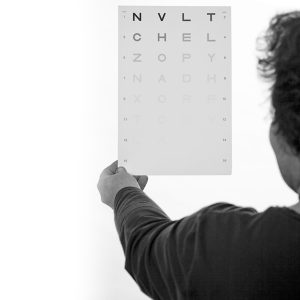
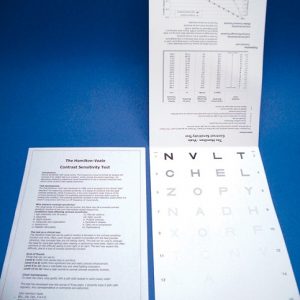 Hamilton-Veale Contrast Sensitivity Test This easy and convenient test can be used to monitor a decrease on the contrast sensitivity function over time. This test also demonstrates the difficulty of seeing in poor lighting or at night.
Hamilton-Veale Contrast Sensitivity Test This easy and convenient test can be used to monitor a decrease on the contrast sensitivity function over time. This test also demonstrates the difficulty of seeing in poor lighting or at night. -
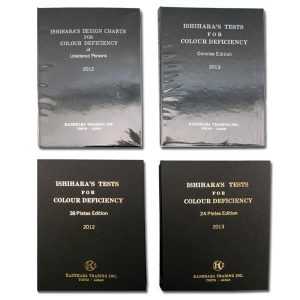
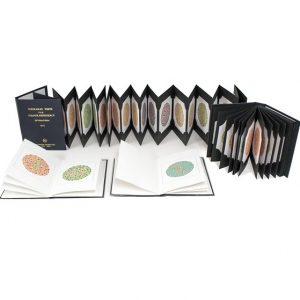 Ishihara Pseudo-Isochromatic Test The most widely used standard of color vision screening in a book form. Instructions Included.
Ishihara Pseudo-Isochromatic Test The most widely used standard of color vision screening in a book form. Instructions Included. -
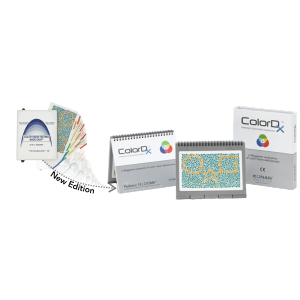 Same great test, but in a new and improved package! The ColorDx Pediatric 15 is the newest version of Color Vision Testing Made Easy or CVTME. As the Gold Standard pediatric assessment of color deficiencies or color blindness See The Multi-Ethnic Pediatric Eye Disease Study published by the AAO, CVTME™ is used in over 40 countries and has been validated for illiterates at the US Special Olympics. Featuring the proven Waggoner six confusion-color strategy, the pediatric test is used in a broad range of settings: pediatrics, eye physicians, school nurses, and many other disciplines of health care, in any language, world-wide. This easy to administer test features both hidden and non-hidden shapes that allow for positive reinforcement even while testing color deficient children by allowing successful answers on most targets. This success-reinforced strategy is also useful for assessment of malingering. Designed by color vision expert Dr. Terrace Waggoner, this new edition features enhanced digital colorimetery production methods, durable page and binding materials, and magnetic light-protective storage case and enhanced digital colorimetery production method and durable page materials and binding. Brilliantly simple to take, easy to score and just plain fun for children.
Same great test, but in a new and improved package! The ColorDx Pediatric 15 is the newest version of Color Vision Testing Made Easy or CVTME. As the Gold Standard pediatric assessment of color deficiencies or color blindness See The Multi-Ethnic Pediatric Eye Disease Study published by the AAO, CVTME™ is used in over 40 countries and has been validated for illiterates at the US Special Olympics. Featuring the proven Waggoner six confusion-color strategy, the pediatric test is used in a broad range of settings: pediatrics, eye physicians, school nurses, and many other disciplines of health care, in any language, world-wide. This easy to administer test features both hidden and non-hidden shapes that allow for positive reinforcement even while testing color deficient children by allowing successful answers on most targets. This success-reinforced strategy is also useful for assessment of malingering. Designed by color vision expert Dr. Terrace Waggoner, this new edition features enhanced digital colorimetery production methods, durable page and binding materials, and magnetic light-protective storage case and enhanced digital colorimetery production method and durable page materials and binding. Brilliantly simple to take, easy to score and just plain fun for children. -
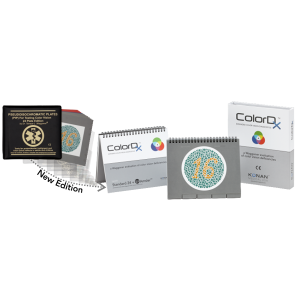 Same great test as before, but with a new and improved package! One of only two color vision tests validated and required for Naval Aviators. ColorDx is new brand identity for the proven Waggoner six confusion-color strategy used by physicians, Ophthalmologists, Optometrists, and nurses worldwide. This military grade test is used by the US Army and for FAA annual flight physicals requiring color vision testing and has been independently validated by both academic institutions and military services. This new edition features enhanced digital colorimetery production methods, durable page and binding materials, and magnetic light-protective storage case. The ColorDx Standard 24 is designed and licensed from color vision expert Dr. Terrace Waggoner and is the newest edition of the Waggoner PIP-24 (PIPIC 24).
Same great test as before, but with a new and improved package! One of only two color vision tests validated and required for Naval Aviators. ColorDx is new brand identity for the proven Waggoner six confusion-color strategy used by physicians, Ophthalmologists, Optometrists, and nurses worldwide. This military grade test is used by the US Army and for FAA annual flight physicals requiring color vision testing and has been independently validated by both academic institutions and military services. This new edition features enhanced digital colorimetery production methods, durable page and binding materials, and magnetic light-protective storage case. The ColorDx Standard 24 is designed and licensed from color vision expert Dr. Terrace Waggoner and is the newest edition of the Waggoner PIP-24 (PIPIC 24). -
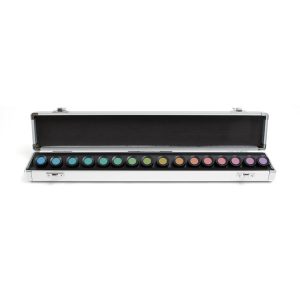 Farnsworth Test for Congenital and Acquired color defects. The Farnsworth D-15 contains a reference disc holding notation 10 B 5 4 and fifteen numbered discs which make up an incomplete color circle. The patient arranges the discs and then evaluation of the patients arrangement separates 'normal' color perception from moderate and strong defects in deutan, protan or tritan axis color discrimination. The disks are spread out on a table and arranged by the patient. The Farnsworth D-15 test is a subset of the well known Farnsworth 100 Hue Test. It is intended for classification instead of in-depth study of color vision defects. The D-15 and 100 hue tests are correlated. Growing Importance of Color deficiency Screening: In addition to congenital color deficiency screening there is growing evidence that adult acquired color deficiency, especially in yellow and blue perception, can indicate medical toxicity and other problems. Increasingly complex security and medical systems also require verification of all three types of color receptors. How the D-15 test works: The Farnsworth D15 is called 'dichotomous' because it is designed to separate subjects into one of two groups, 1) Strongly color deficient or 2) Mildly color deficient or color normal. This is accomplished by the arrangement of vivid (saturated) colored discs. A perfect score shows normal color perception. A non-perfect score is used to determine a medium or strong color deficiency.
Farnsworth Test for Congenital and Acquired color defects. The Farnsworth D-15 contains a reference disc holding notation 10 B 5 4 and fifteen numbered discs which make up an incomplete color circle. The patient arranges the discs and then evaluation of the patients arrangement separates 'normal' color perception from moderate and strong defects in deutan, protan or tritan axis color discrimination. The disks are spread out on a table and arranged by the patient. The Farnsworth D-15 test is a subset of the well known Farnsworth 100 Hue Test. It is intended for classification instead of in-depth study of color vision defects. The D-15 and 100 hue tests are correlated. Growing Importance of Color deficiency Screening: In addition to congenital color deficiency screening there is growing evidence that adult acquired color deficiency, especially in yellow and blue perception, can indicate medical toxicity and other problems. Increasingly complex security and medical systems also require verification of all three types of color receptors. How the D-15 test works: The Farnsworth D15 is called 'dichotomous' because it is designed to separate subjects into one of two groups, 1) Strongly color deficient or 2) Mildly color deficient or color normal. This is accomplished by the arrangement of vivid (saturated) colored discs. A perfect score shows normal color perception. A non-perfect score is used to determine a medium or strong color deficiency. -
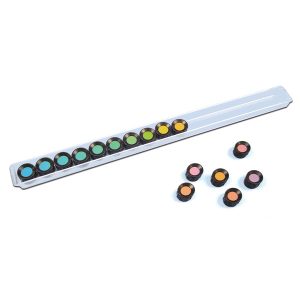 Farnsworth D15 Dichotomous Color Test Farnsworth Test for Congenital and Acquired color defects. The Farnsworth D-15 contains a reference disc holding notation 10 B 5 4 and fifteen numbered discs which make up an incomplete color circle. The patient arranges the discs and then evaluation of the patients arrangement separates 'normal' color perception from moderate and strong defects in deutan, protan or tritan axis color discrimination. The D-15 is housed in a plexiglass container. the disks are spread out on a table and arranged by the patient. The Farnsworth D-15 test is a subset of the well known Farnsworth 100 Hue Test. It is intended for classification instead of in-depth study of color vision defects. The D-15 and 100 hue tests are correlated. Growing Importance of Color deficiency Screening. In addition to congenital color deficiency screening there is growing evidence that adult acquired color deficiency, especially in yellow and blue perception, can indicate medical toxicity and other problems. Increasingly complex security and medical systems also require verification of all three types of color receptors. How the D-15 test works: The Farnsworth D15 is called 'dichotomous' because it is designed to separate subjects into one of two groups, 1) Strongly color deficient or 2) Mildly color deficient or color normal. This is accomplished by the arrangement of vivid (saturated) colored discs. A perfect score shows normal color perception. A non-perfect score is used to determine a medium or strong color deficiency.
Farnsworth D15 Dichotomous Color Test Farnsworth Test for Congenital and Acquired color defects. The Farnsworth D-15 contains a reference disc holding notation 10 B 5 4 and fifteen numbered discs which make up an incomplete color circle. The patient arranges the discs and then evaluation of the patients arrangement separates 'normal' color perception from moderate and strong defects in deutan, protan or tritan axis color discrimination. The D-15 is housed in a plexiglass container. the disks are spread out on a table and arranged by the patient. The Farnsworth D-15 test is a subset of the well known Farnsworth 100 Hue Test. It is intended for classification instead of in-depth study of color vision defects. The D-15 and 100 hue tests are correlated. Growing Importance of Color deficiency Screening. In addition to congenital color deficiency screening there is growing evidence that adult acquired color deficiency, especially in yellow and blue perception, can indicate medical toxicity and other problems. Increasingly complex security and medical systems also require verification of all three types of color receptors. How the D-15 test works: The Farnsworth D15 is called 'dichotomous' because it is designed to separate subjects into one of two groups, 1) Strongly color deficient or 2) Mildly color deficient or color normal. This is accomplished by the arrangement of vivid (saturated) colored discs. A perfect score shows normal color perception. A non-perfect score is used to determine a medium or strong color deficiency. -
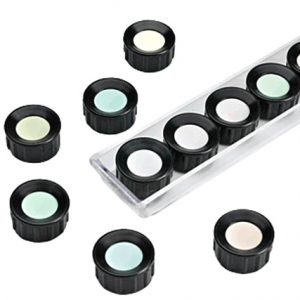 Anthony 15 Hue-Test Desaturated Test revels color blindness by using light hues. Diagnoses abnormal congentia, trichromats, and dyschromatopsia.
Anthony 15 Hue-Test Desaturated Test revels color blindness by using light hues. Diagnoses abnormal congentia, trichromats, and dyschromatopsia. -
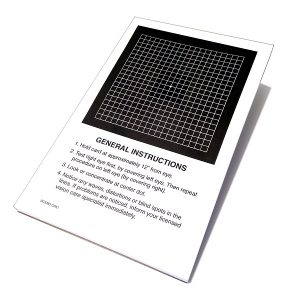 ARMD Test Pad Amsler grid pad for testing and monitoring macular problems. Ideal for patients to take home. Heavy, non-wrinkle paper Pad of 50 sheets
ARMD Test Pad Amsler grid pad for testing and monitoring macular problems. Ideal for patients to take home. Heavy, non-wrinkle paper Pad of 50 sheets -
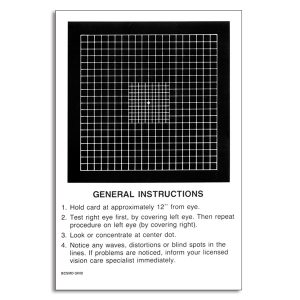 Refined Central Amsler Grid Amsler grid pad with additional lines at the central fixation point for testing and monitoring macular problems. Pad of 50 sheets
Refined Central Amsler Grid Amsler grid pad with additional lines at the central fixation point for testing and monitoring macular problems. Pad of 50 sheets -
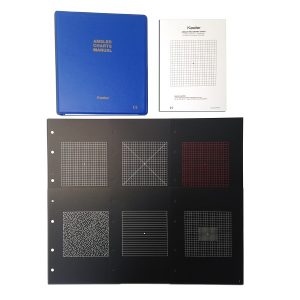 Amsler Chart Book Test for metamorphopsia, maculo-pathy and retino-pathy. Imported from England Includes six grids as pictured Instructions Included 5-1/2" x 8-1/2"
Amsler Chart Book Test for metamorphopsia, maculo-pathy and retino-pathy. Imported from England Includes six grids as pictured Instructions Included 5-1/2" x 8-1/2" -
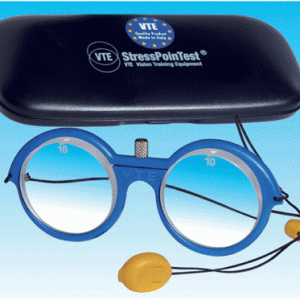 Yoked Rotating Prisms (VTE) Adult Size Each comes with case.
Yoked Rotating Prisms (VTE) Adult Size Each comes with case. -
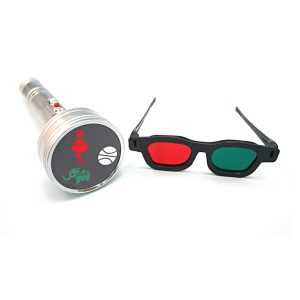 Three Figure Worth Type Test This test is used for determining diplopia, suppression or fusion in children. Sturdy flashlight comes with red/green glasses. Chrome 8" long flashight with 3" extension included. Requires 2 to 3 D batteries depending on the handle length. Not Included.
Three Figure Worth Type Test This test is used for determining diplopia, suppression or fusion in children. Sturdy flashlight comes with red/green glasses. Chrome 8" long flashight with 3" extension included. Requires 2 to 3 D batteries depending on the handle length. Not Included. -
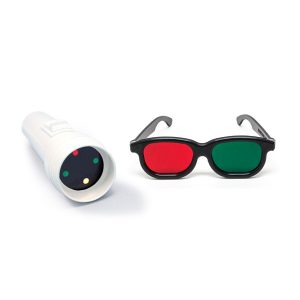 Worth 4-Dot Test Flashlight Used for testing and training of fusion, suppression, and/or diplopia. Red/Green goggle included. Requires 2 C batteries (not included).
Worth 4-Dot Test Flashlight Used for testing and training of fusion, suppression, and/or diplopia. Red/Green goggle included. Requires 2 C batteries (not included). -
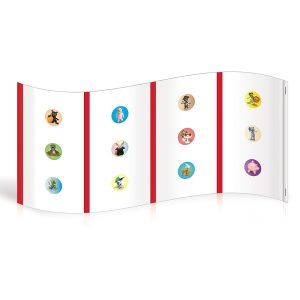
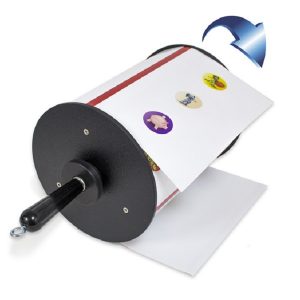 Sized to fit over our Adult Optokinetic Drum (DAL300) this vinyl sheet is used to test for the optokinetic reflex. The banner has child interest targets similar to our DAL301. Can be rolled up for easy storage. Clear end pieces hold banner from curling. Washable plastic material similar to window shade. Velcro on backside of the banner allows for easy attachment around the Adult Optokinetic Drum (DAL300). Item #: OKNADP1
Sized to fit over our Adult Optokinetic Drum (DAL300) this vinyl sheet is used to test for the optokinetic reflex. The banner has child interest targets similar to our DAL301. Can be rolled up for easy storage. Clear end pieces hold banner from curling. Washable plastic material similar to window shade. Velcro on backside of the banner allows for easy attachment around the Adult Optokinetic Drum (DAL300). Item #: OKNADP1 -
Optokinetic Drum Ped 10 1/2' H x 8" Diameter Accurately test for acuity when rotated 8 to 10 RPMs at different reading distance. 10" long x 8" diameter Has Animals and Shapes Item #: DAL301
-
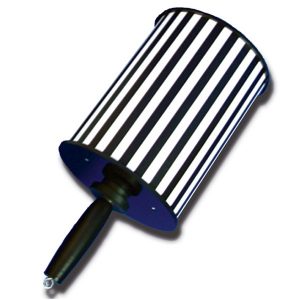 Optokinetic Drum - Adult White with Black Stripes Accurately test for acuity when rotated 8 to 10 RPMs at different reading distance. 10" long and 8" diameter. Item #: DAL300
Optokinetic Drum - Adult White with Black Stripes Accurately test for acuity when rotated 8 to 10 RPMs at different reading distance. 10" long and 8" diameter. Item #: DAL300 -
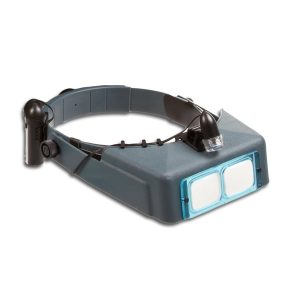
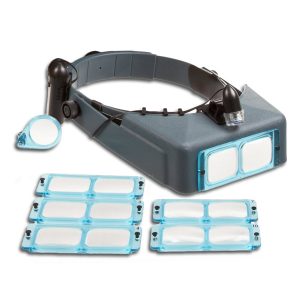 OptiVISOR® Magnifier Available in diopters of: 3, 4, 5, 7, & 10 Ideal for anyone whose profession or hobby requires accurate work. Precision binocular headband magnifier permits unrestricted three-dimensional vision while reducing eye strain and freeing the hands. Optical glass prismatic lenses, ground and polished to precision optical standards. Visor can be worn over prescription or safety eye glasses. Pivots to allow visor to be tilted out of the way when not needed. Headband conforms to fit all head sizes, and is comfortable even when worn for long periods.
OptiVISOR® Magnifier Available in diopters of: 3, 4, 5, 7, & 10 Ideal for anyone whose profession or hobby requires accurate work. Precision binocular headband magnifier permits unrestricted three-dimensional vision while reducing eye strain and freeing the hands. Optical glass prismatic lenses, ground and polished to precision optical standards. Visor can be worn over prescription or safety eye glasses. Pivots to allow visor to be tilted out of the way when not needed. Headband conforms to fit all head sizes, and is comfortable even when worn for long periods. -
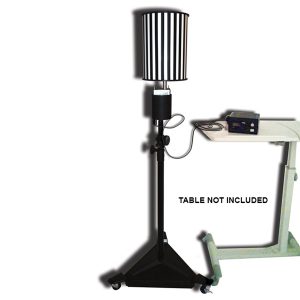 The new OKN drum now has the same motor and control box as our stand rotator but is on wheels. This unit comes with the optional RPM display which accurately tells the speed of rotation. This would help in accurate testing of acuities on children or even in malingerers. Item #: DAL300WR
The new OKN drum now has the same motor and control box as our stand rotator but is on wheels. This unit comes with the optional RPM display which accurately tells the speed of rotation. This would help in accurate testing of acuities on children or even in malingerers. Item #: DAL300WR -
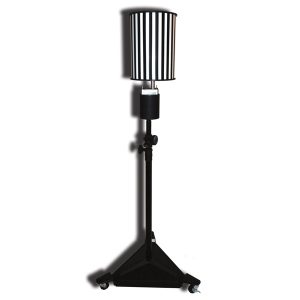 We now sell an optokinetic drum that has the same DC motor and control box as our Stand Rotator (BC1060). The OKN drum can rotate through a wide range of speeds but especially a wide range of very slow ratation and can reverse. See also the DAL300WR with a digital display of speeds. Unit is on wheels so that it can be more easily stored. Item #: DAL300W
We now sell an optokinetic drum that has the same DC motor and control box as our Stand Rotator (BC1060). The OKN drum can rotate through a wide range of speeds but especially a wide range of very slow ratation and can reverse. See also the DAL300WR with a digital display of speeds. Unit is on wheels so that it can be more easily stored. Item #: DAL300W -
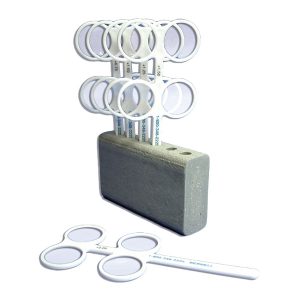 Our kit allows patients to try Monovision over thier glasses or distance contacts. The doctor quickly determines which eye is better for near and what add [power works best. The patient sees the distance blur and learns what to expect. Eliminate Monovision surprises. Reduce Chairtime and power changes. Get it right the first time while eliminating patients who won't accept Monovision. Each flipper has a plano lens next to a reading add. Turning the flipper changes which eye sees distance and which has the reading add of the same power. The five flippers are of +0.75D, +1.00D, +1.25D, +1.50D, and +2.00D. Comes with economy holder (BCFHE). Item #: MDKIT
Our kit allows patients to try Monovision over thier glasses or distance contacts. The doctor quickly determines which eye is better for near and what add [power works best. The patient sees the distance blur and learns what to expect. Eliminate Monovision surprises. Reduce Chairtime and power changes. Get it right the first time while eliminating patients who won't accept Monovision. Each flipper has a plano lens next to a reading add. Turning the flipper changes which eye sees distance and which has the reading add of the same power. The five flippers are of +0.75D, +1.00D, +1.25D, +1.50D, and +2.00D. Comes with economy holder (BCFHE). Item #: MDKIT -
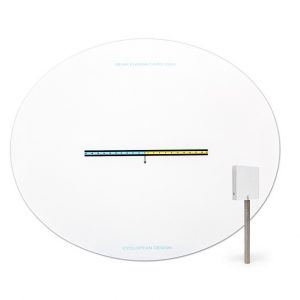
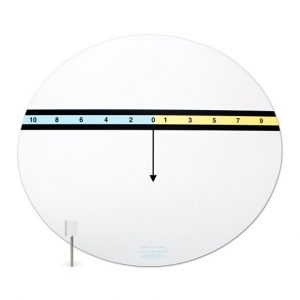 Both Near and Far come with a single 6 PD stick prism. These cards allow direct measurement of the distance and near phorias in real space or with a phorpter. The patient simple has to tell which number the arrow points to. Any odd number (in yellow) shows esophoria while the even numbers (in blue) shows exophoria. An AC/A can quickly be determined with trial lenses. The reverse side of the near card has a X-Cyl target, and a variety of letter and word targets. Near card is about 12" wide. Distance chart is about 24" wide. Item #: CDHP+
Both Near and Far come with a single 6 PD stick prism. These cards allow direct measurement of the distance and near phorias in real space or with a phorpter. The patient simple has to tell which number the arrow points to. Any odd number (in yellow) shows esophoria while the even numbers (in blue) shows exophoria. An AC/A can quickly be determined with trial lenses. The reverse side of the near card has a X-Cyl target, and a variety of letter and word targets. Near card is about 12" wide. Distance chart is about 24" wide. Item #: CDHP+ -
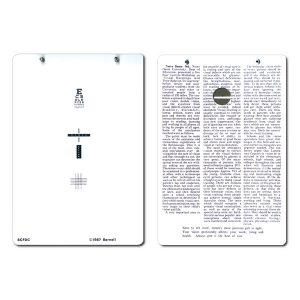 Variable slide adjust to determine fixation disparity or may be used with hand held prisms. Designed for phoroptor use. The card comes with a label which may be placed over the prism diopter scale for an additional scale in degrees. Reverse side of card includes reduced Snellen, fusional target and cross cylinder targets. 5-1/2" x 8" card and polarized goggle. Item #: BCFDC
Variable slide adjust to determine fixation disparity or may be used with hand held prisms. Designed for phoroptor use. The card comes with a label which may be placed over the prism diopter scale for an additional scale in degrees. Reverse side of card includes reduced Snellen, fusional target and cross cylinder targets. 5-1/2" x 8" card and polarized goggle. Item #: BCFDC

